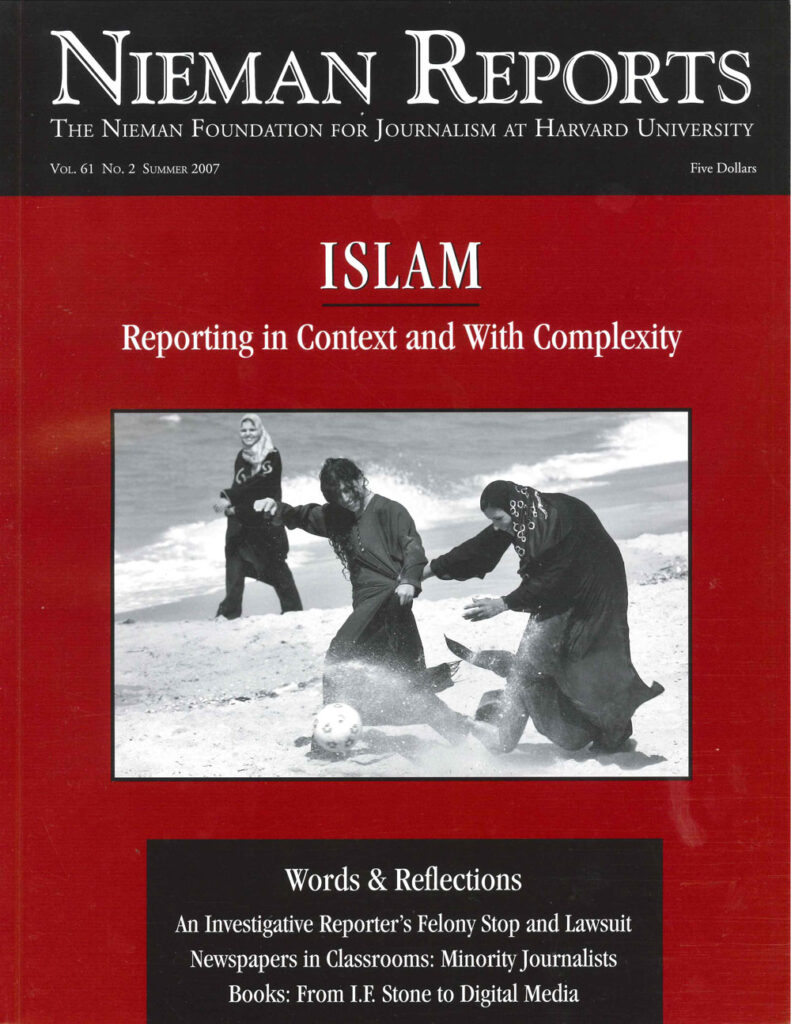By some estimates, as many as six million Muslims live in the United States. They have roots around the globe, from Albania to Senegal, Guyana to Pakistan. Some 34 percent of American Muslims are of South Asian descent, another 26 percent are of Arab extraction, and roughly a quarter of them are African-American, according to the pollster John Zogby.
REFERRED ARTICLE
"Muslims in America: Creating a New Beat"
– Andrea ElliottThe rich texture of American Islam draws not only from that mix of race, ethnicity and national origin, but also from a spectrum of religious expression—secular and devout, Sunni and Shi'ite, flexibly modern and rigidly literal. Only 10 percent of American Muslims regularly attend the nation's estimated 1,200 mosques, which range from crumbling, inner city storefronts to palatial Islamic centers in the suburbs. Many Muslims worship at home; others don't observe the daily prayers, identifying themselves as "cultural Muslims."
One thing binding many American Muslims together is their relative prosperity. Muslims began arriving in large numbers in the 1960's, after immigration reforms granted entry to thousands of skilled workers from the Middle East and South Asia. A larger percentage of immigrants from Muslim countries have graduate degrees than other U.S. residents, and their average salary is about 20 percent higher, according to census data.
Andrea Elliott covers Islam in America, a beat she created in 2005 for The New York Times. Her three-part series, "An Imam in America," won the 2007 Pulitzer for Feature Writing. She is learning Arabic.
REFERRED ARTICLE
"Muslims in America: Creating a New Beat"
– Andrea ElliottThe rich texture of American Islam draws not only from that mix of race, ethnicity and national origin, but also from a spectrum of religious expression—secular and devout, Sunni and Shi'ite, flexibly modern and rigidly literal. Only 10 percent of American Muslims regularly attend the nation's estimated 1,200 mosques, which range from crumbling, inner city storefronts to palatial Islamic centers in the suburbs. Many Muslims worship at home; others don't observe the daily prayers, identifying themselves as "cultural Muslims."
One thing binding many American Muslims together is their relative prosperity. Muslims began arriving in large numbers in the 1960's, after immigration reforms granted entry to thousands of skilled workers from the Middle East and South Asia. A larger percentage of immigrants from Muslim countries have graduate degrees than other U.S. residents, and their average salary is about 20 percent higher, according to census data.
Andrea Elliott covers Islam in America, a beat she created in 2005 for The New York Times. Her three-part series, "An Imam in America," won the 2007 Pulitzer for Feature Writing. She is learning Arabic.



